Top Surf Spots in Bali and What Visa You Need
Bali, the idyllic island in Indonesia, has long been a mecca for surfers from around the world. With its crystal-clear waters, consistent waves, and stunning landscapes, it's no wonder that Bali has cemented its place as a top surf destination. Whether you're a seasoned wave rider or just starting out, Bali offers a diverse range of surf spots suitable for all skill levels.
Surfing is more than just a sport in Bali; it's a way of life. The island's surf culture is vibrant and welcoming, with a strong sense of community among wave enthusiasts. From the laid-back beach towns to the bustling surf shops and cafes, you'll find a shared passion for riding the perfect wave. Bali's surf community is known for its camaraderie, with locals and visitors alike coming together to share their love of the ocean.
Surfing Seasons and Best Times to Visit
Bali's surf scene is characterized by distinct seasons, each offering its own unique conditions and challenges. The dry season, which runs from April to September, is generally considered the best time to visit for consistent waves and favorable weather.
During this period, the southern coast of Bali, particularly spots like Uluwatu and Padang Padang, come alive with powerful swells and world-class waves. The wet season, from October to March, brings larger waves and more challenging conditions, attracting experienced surfers looking to test their skills.
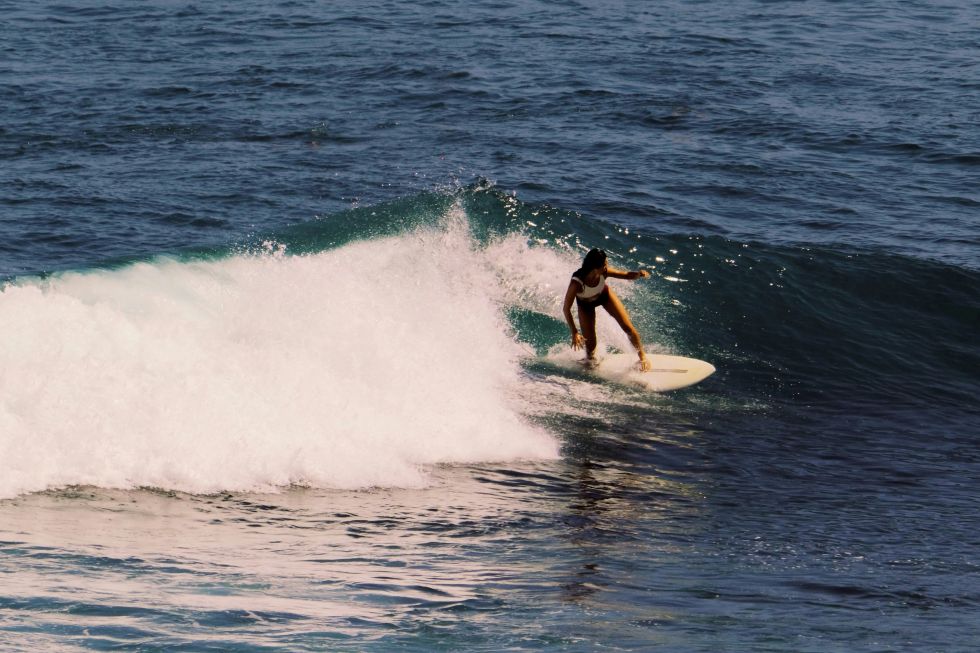
Variety of Surf Spots
One of the main attractions of surfing in Bali is the sheer variety of surf spots on offer. From the long, peeling waves of Medewi to the powerful barrels of Keramas, there's a wave for every type of surfer. Beginners can find their footing at mellow spots like Canggu, while advanced riders can challenge themselves at the more demanding breaks.
With so many options to choose from, surfers can easily find a spot that suits their skill level and preferences.
Top Surf Spots in Bali
Bali is home to some of the most iconic surf spots in the world, each offering unique waves and experiences that cater to surfers of all levels. From thrilling barrels to gentle swells, the island’s diverse coastline provides an array of options for every type of wave rider. Here’s a closer look at the top surf spots in Bali, where adventure awaits.
Uluwatu
Uluwatu is undoubtedly one of Bali’s premier surf spots, renowned for its breathtaking cliffs and world-class waves. This iconic location features a series of breaks that cater to experienced surfers, with powerful, fast waves that can reach up to 10 feet during peak season. The best conditions are typically found between April and September, when the southwest swells roll in.
For those looking to challenge themselves, Uluwatu offers a variety of wave types, including the famous “Racetracks” and “Temple” breaks. However, it’s essential to note that Uluwatu is best suited for advanced surfers due to its strong currents and rocky bottom. Nearby accommodations range from luxurious cliffside resorts to budget-friendly guesthouses, making it easy to find a place to rest after a long day in the water.
Padang Padang
Padang Padang is another must-visit surf spot in Bali, famous for its beautiful beach and consistent waves. Often referred to as the “Balinese Pipeline,” Padang Padang is known for its powerful right-hand reef break that attracts surfers from around the globe. The ideal time to surf here is during the dry season, when the waves are at their best.
This spot is particularly popular for hosting annual surfing events, including the Padang Padang Surf Competition, which draws top surfers to test their skills. While the waves can be challenging, there are also sections suitable for intermediate surfers. Safety is paramount, so it’s advisable to be cautious of the rocky reef and strong currents. After a surf session, visitors can enjoy the local beach clubs and restaurants that offer delicious Balinese cuisine.
Canggu
Canggu has emerged as a versatile surf spot that caters to surfers of all skill levels, making it a favorite among both locals and tourists. With several breaks, including Batu Bolong and Echo Beach, Canggu offers mellow waves perfect for beginners, as well as more challenging sections for advanced surfers. The best time to surf in Canggu is during the dry season, when the waves are more consistent and manageable.
Canggu is also home to a thriving surf school scene, providing ample opportunities for beginners to learn the ropes. In addition to surfing, Canggu boasts a vibrant lifestyle and nightlife, with trendy cafes, beach clubs, and yoga studios. After a day of catching waves, surfers can unwind and enjoy the laid-back atmosphere that Canggu is known for.
Keramas
For those seeking powerful waves and a thrilling surf experience, Keramas is the place to be. Located on Bali’s east coast, this surf spot is famous for its fast, hollow waves that can produce epic barrels, making it a favorite among experienced surfers. The best time to surf Keramas is during the dry season, particularly from May to September, when the swells are at their peak.
Keramas also hosts various surf competitions, attracting top talent from around the world. Surfers should be prepared for the challenging conditions, as the waves can be quite powerful. However, the stunning backdrop of black sand beaches and lush greenery makes every surf session a memorable one.
Medewi
For those looking for a quieter surf experience, Medewi offers long left-hand waves that are perfect for a relaxing day on the water. Located on Bali’s west coast, Medewi is less crowded than other popular surf spots, making it ideal for surfers seeking a more laid-back atmosphere. The waves here are best for intermediate surfers, with consistent swells that can reach up to 6 feet.
Medewi’s tranquil setting is complemented by its local culture, providing surfers with an opportunity to immerse themselves in the traditional Balinese lifestyle. Accommodations in the area range from cozy guesthouses to beachfront bungalows, allowing visitors to unwind after a day of surfing.
Bali’s top surf spots offer a diverse range of experiences, ensuring that every surfer can find their perfect wave. From the challenging breaks of Uluwatu and Keramas to the beginner-friendly waves of Canggu and Medewi, the island is a true paradise for surf enthusiasts.
As you prepare for your surf adventure in Bali, don’t forget to consider the necessary visa requirements to ensure a smooth journey. In the next section, we’ll explore the visa options available for surfers traveling to this stunning destination.
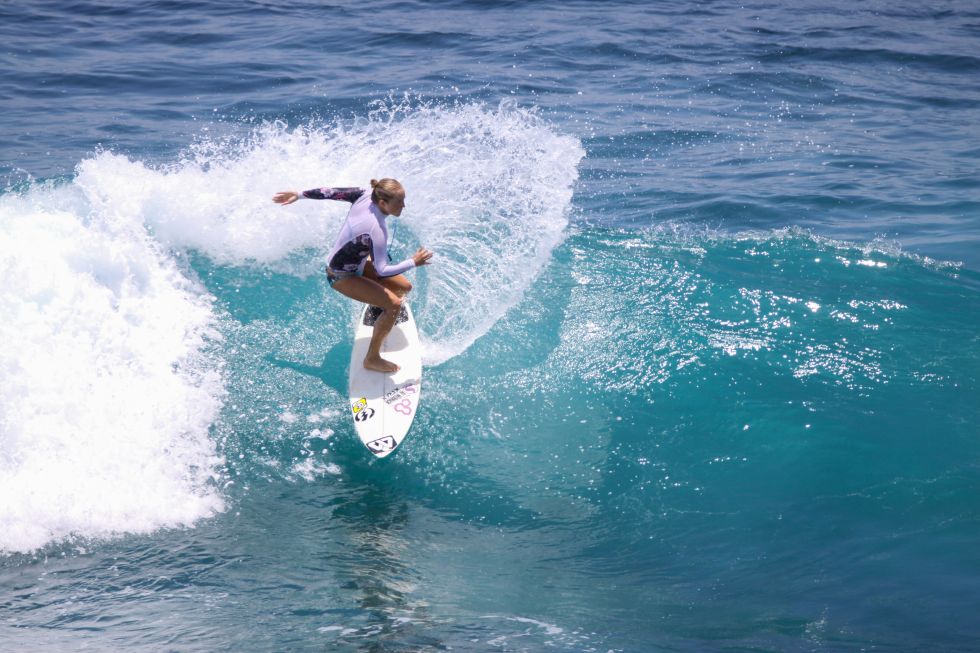
Surf Safety Tips
Surfing in Bali can be an exhilarating experience, but safety should always be a top priority. The ocean can be unpredictable, and understanding how to navigate its challenges is essential for a fun and secure surf trip. Here are some crucial safety tips to keep in mind while enjoying the waves in Bali.
If you are single female surfer – here are some safety tips
Know Your Limits
Before hitting the water, it’s vital to assess your skill level and the conditions of the surf. Bali offers a wide range of surf spots, each with different wave sizes and challenges. Beginners should stick to mellow beaches like Canggu or Kuta, where the waves are more forgiving. More experienced surfers can tackle the powerful breaks of Uluwatu or Padang Padang, but it’s essential to know your limits and surf within your ability to avoid dangerous situations.
Check the Conditions
Always check the surf report and local conditions before heading out. Factors such as tide, swell size, wind direction, and current strength can significantly affect wave quality and safety. Websites and apps like Magicseaweed and Surfline provide up-to-date information on surf conditions. Additionally, local surf shops and schools can offer valuable insights into the current state of the waves and any potential hazards.
Use Proper Equipment
Using the right equipment is crucial for surf safety. Always wear a leash to keep your board attached to you, preventing it from becoming a hazard to yourself and others. If you’re surfing in more challenging conditions, consider wearing a helmet to protect your head from any potential impacts. A wetsuit can also provide warmth and protection from the sun, especially during longer sessions.
Visa Requirements for Surfers Traveling to Bali
When planning a surf trip to Bali, understanding the visa requirements is essential for a smooth and enjoyable experience. Bali offers various visa options to accommodate different travel needs, whether you're visiting for a short surf trip or planning to stay longer. Here’s a comprehensive guide to the visa requirements for surfers traveling to Bali.
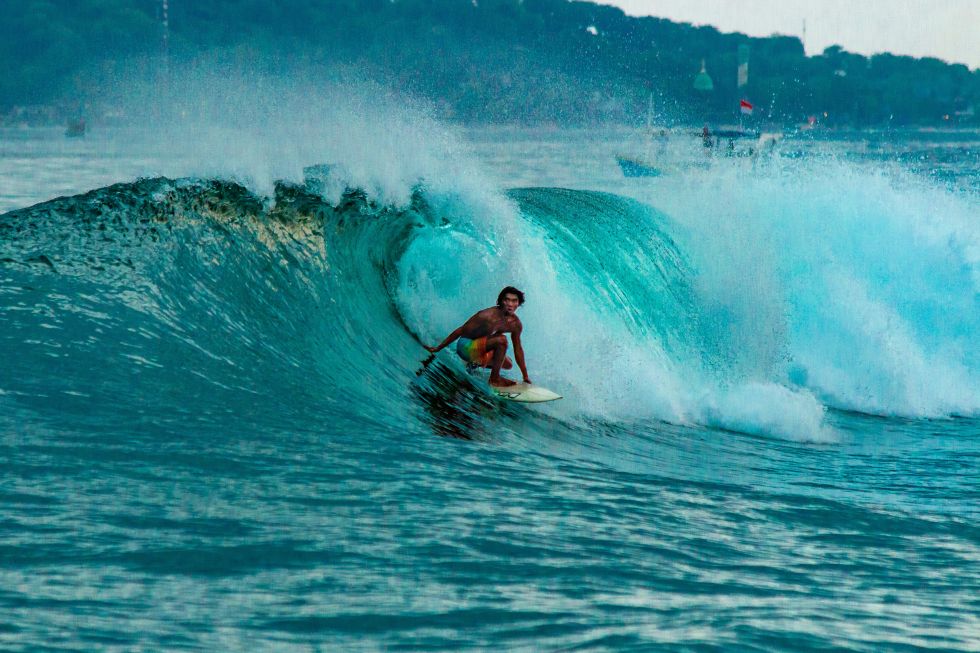
Visa Types Available
For surfers heading to Bali, there are several visa types to consider, each with its own duration and conditions. The most common options include:
- Visa on Arrival (VoA): This visa is ideal for short-term visits and can be obtained upon arrival at the airport. The VoA is valid for 30 days and can be extended for an additional 30 days, making it a great option for surfers looking to catch some waves without a lengthy commitment.
- Tourist Visa: If you plan to stay longer than 30 days, a tourist visa may be the best choice. This visa can be obtained before your arrival and typically allows for a stay of up to 60 days, with the option to extend for another 30 days. It’s perfect for surfers who want to explore Bali’s surf spots at a more leisurely pace.
- Social/Cultural Visa: For those planning to stay in Bali for an extended period, the Social/Cultural Visa is an excellent option. This visa allows for a stay of up to 60 days and can be extended multiple times, making it suitable for surfers who want to immerse themselves in the local culture and surf scene.
How to Apply for a Bali Visa
Applying for a Bali visa is a straightforward process, but it’s essential to gather the necessary documents and follow the correct steps. Here’s a step-by-step guide to applying for a Bali visa:
- Determine the Visa Type: Decide which visa option best suits your travel plans based on the duration of your stay and activities in Bali.
- Gather Required Documents: Commonly required documents include:
– A valid passport with at least six months of validity remaining.
– A return ticket or proof of onward travel.
– Recent passport-sized photographs.
– Completed visa application form (available online or at the Indonesian embassy).
- Submit Your Application: For the Tourist Visa and Social/Cultural Visa, applications should be submitted to the nearest Indonesian embassy or consulate. The Visa on Arrival can be obtained directly at the airport.
- Pay the Visa Fee: Be prepared to pay the applicable visa fee, which varies depending on the type of visa and the duration of stay.
- Wait for Processing: Processing times can vary, so it’s advisable to apply well in advance of your travel dates to avoid any last-minute issues.
By following these steps and ensuring you have the necessary documentation, surfers can navigate the visa application process with ease.
Visa Requirements for Long-Term Surf Stays
For surfers who plan to stay in Bali for an extended period, understanding the visa requirements for long-term stays is crucial. Bali offers several options for those looking to enjoy the waves for longer durations, but it’s essential to comply with local regulations to avoid any complications.
Options for Extended Stays
- Social/Cultural Visa: As mentioned earlier, the Social/Cultural Visa is an excellent choice for long-term stays. This visa allows for an initial stay of 60 days and can be extended up to four times, providing a total stay of up to 180 days. This option is perfect for surfers who want to immerse themselves in Bali’s surf culture and lifestyle.
- Tourist Visa Extensions: If you initially entered Bali on a Tourist Visa, you can extend your stay for an additional 30 days. However, it’s important to note that this extension is only available once, so planning ahead is essential.
- Long-Term Stay Visa: For those looking to stay in Bali for more than six months, there are options such as the Retirement Visa or the Investor Visa. These visas have specific requirements and conditions, so it’s advisable to consult with an immigration expert to determine the best option for your situation.
Legal Considerations for Long-Term Stays
When planning for a long-term surf stay in Bali, it’s vital to be aware of the legal considerations involved. Overstaying your visa can result in hefty fines or even deportation, so it’s crucial to keep track of your visa expiration date and ensure you apply for extensions in a timely manner.
Additionally, it’s recommended to keep copies of all visa-related documents and receipts, as these may be required for any future visa applications or extensions. By staying informed about the visa requirements and adhering to local regulations, surfers can enjoy a seamless and extended surf experience in Bali.
Combining Surfing and Cultural Exploration
Bali is not only a world-class surf destination but also a cultural treasure trove. As a surfer, you have the unique opportunity to immerse yourself in the island's rich heritage and traditions while chasing waves. By balancing your surf time with cultural exploration, you can create a well-rounded and enriching experience during your stay in Bali.
Exploring Bali's Cultural Attractions
Bali is home to numerous cultural sites and attractions that offer a glimpse into the island's history and spirituality. From ancient temples to traditional villages, there's no shortage of places to discover. Some of the must-visit cultural sites near popular surf spots include:
- Uluwatu Temple: Located near the famous Uluwatu surf spot, this ancient Hindu temple perched on a cliff offers stunning ocean views and a chance to witness the iconic Kecak dance performance.
- Tanah Lot Temple: This iconic sea temple is situated on a rocky outcrop and is particularly beautiful during sunset, making it a popular spot for photographers and culture enthusiasts alike.
- Tegalalang Rice Terraces: Just a short drive from Canggu, these lush, green terraces are a testament to Bali's agricultural heritage and a popular spot for hiking and photography.
- Campuhan Ridge Walk: This scenic trail in Ubud offers stunning views of the Ayung River valley and is a great way to connect with nature while exploring Bali's cultural heart.
Tips for Respectful Travel
When exploring Bali's cultural sites, it's essential to be mindful of local customs and traditions. Dress modestly, especially when visiting temples, and always ask for permission before taking photographs of people or sacred sites. Respect local dress codes and remove your shoes when entering temples or homes.
Additionally, consider supporting local businesses and artisans by purchasing souvenirs or participating in cultural workshops. This not only enriches your travel experience but also contributes to the preservation of Bali's unique cultural heritage.
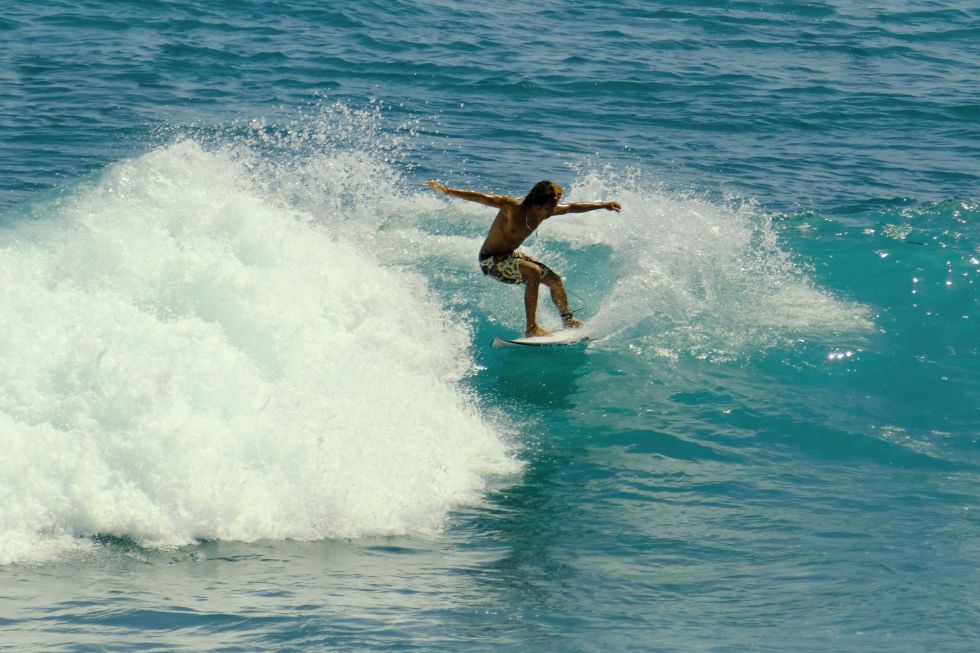
Balancing Surf Time and Sightseeing
Striking a balance between surfing and cultural exploration can be challenging, but with some planning, you can make the most of your time in Bali. Consider dedicating specific days or afternoons to cultural activities, allowing you to surf during the best conditions while still experiencing the island's rich heritage.
Many surf camps and accommodations in Bali offer cultural excursions or can assist in arranging tours, making it easy to incorporate cultural experiences into your surf trip. By embracing both the waves and the culture, you'll leave Bali with a deeper appreciation for this remarkable island and its people.
Travel and Accommodation Tips for Surfers
Planning a surf trip to Bali requires more than just booking flights and accommodations. To ensure a smooth and enjoyable experience, it's essential to consider various factors, from transportation to surf gear. Here are some essential travel and accommodation tips for surfers visiting Bali.
When choosing accommodations in Bali, location is key, especially if you're a surfer. Look for accommodations that are close to your preferred surf spots to minimize travel time and maximize your time in the water. Many surf camps and resorts offer packages that include accommodation, surf lessons, and equipment rental, making it a convenient option for those new to the area.
For budget-conscious travelers, Bali offers a wide range of affordable guesthouses and hostels, often located near popular surf spots. These accommodations provide a more immersive experience and the opportunity to connect with fellow surfers and travelers.
Transportation Options for Surfers
Getting around Bali can be a bit of a challenge, especially if you're carrying surfboards. Renting a scooter or motorcycle is a popular and convenient option, but it's essential to be aware of local traffic laws and wear a helmet. If you're not comfortable riding a scooter, consider hiring a driver or using ride-sharing services like Grab or Gojek.
When transporting your surfboard, always use a board bag or cover to protect it from the elements and potential damage. Many accommodations and surf shops offer board storage, so you don't have to worry about lugging your gear around.
Traveling with surfboards can be a hassle, especially if you're flying. Consider renting equipment upon arrival in Bali, as many surf shops and camps offer high-quality boards and wetsuits at reasonable prices. This not only saves you the trouble of transporting your gear but also allows you to try different boards and find the perfect match for the local conditions.
When renting equipment, always inspect it thoroughly for any damage or wear and tear. If you plan to surf in remote areas or during the wet season, consider purchasing travel insurance to cover any potential accidents or injuries.
Travel Insurance Considerations
Speaking of travel insurance, it's highly recommended to purchase a policy that covers surfing and other adventure sports. Bali's surf spots can be challenging, and accidents do happen. A good travel insurance policy will provide coverage for medical expenses, trip cancellations, and even lost or stolen equipment.
When choosing a travel insurance policy, make sure to read the fine print and understand the coverage limits and exclusions. Some policies may have specific requirements for adventure sports, such as requiring you to wear a helmet or use a leash while surfing.
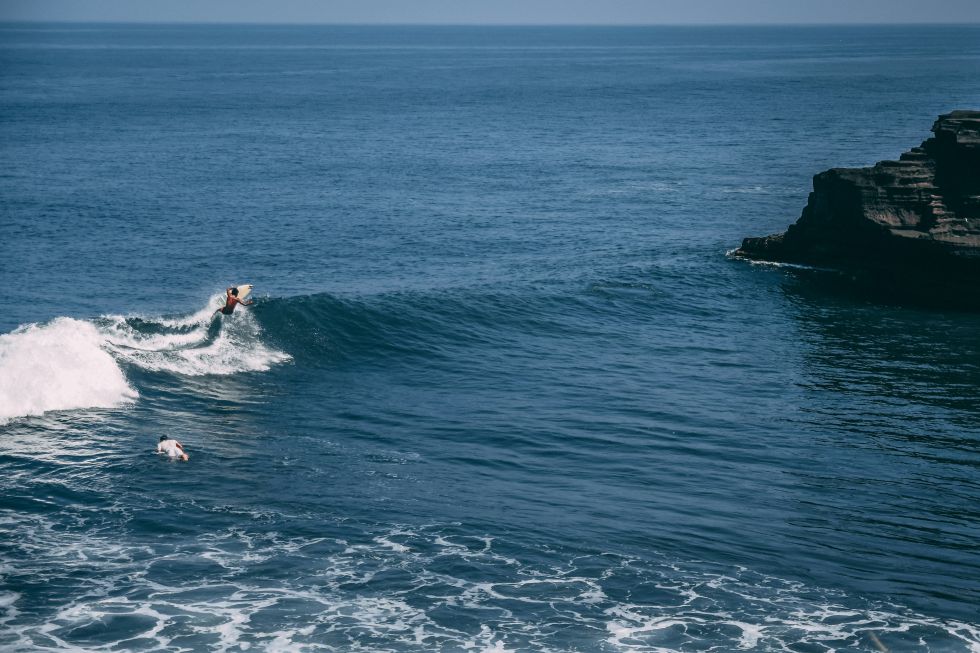
Frequently Asked Questions (FAQs)
When planning a surf trip to Bali, many travelers have common questions regarding surfing conditions, visa requirements, and local customs. Here’s a compilation of frequently asked questions to help surfers navigate their journey to this beautiful island.
What is the best time to surf in Bali?
The best time to surf in Bali is during the dry season, which runs from April to September. During this period, the southern coast experiences consistent swells and favorable weather conditions, making it ideal for both beginners and experienced surfers. However, the wet season from October to March can also offer great waves, particularly for advanced surfers, as larger swells roll in.
Can I extend my Visa on Arrival in Bali?
Yes, the Visa on Arrival (VoA) can be extended for an additional 30 days. To do this, you must visit an immigration office in Bali before your initial 30 days expire. It’s advisable to start the extension process at least a week in advance to avoid any last-minute issues.
Are there any surf spots suitable for beginners in Bali?
Absolutely! Bali has several surf spots that are perfect for beginners. Canggu and Kuta Beach are popular choices, offering gentle waves and numerous surf schools where you can take lessons. These locations provide a supportive environment for new surfers to learn and gain confidence in the water.
How do I apply for a Bali Tourist Visa?
To apply for a Bali Tourist Visa, you can either apply online or visit the nearest Indonesian embassy or consulate. You’ll need to provide a valid passport, a return ticket, passport-sized photographs, and a completed visa application form. The Tourist Visa typically allows for a stay of up to 60 days, with the option to extend for an additional 30 days.
What are the penalties for overstaying my visa in Bali?
Overstaying your visa in Bali can result in significant penalties, including fines and potential deportation. The fines can range from IDR 1,000,000 (approximately $70) per day of overstay, and the consequences can include being banned from re-entering Indonesia for a certain period. To avoid this, always keep track of your visa expiration date and apply for extensions if needed.
Is travel insurance necessary for surfing in Bali?
While travel insurance is not mandatory, it is highly recommended for surfers traveling to Bali. Surfing can involve risks, and having insurance that covers medical expenses, trip cancellations, and lost or stolen equipment can provide peace of mind. Be sure to choose a policy that specifically covers surfing and other adventure sports.
Can I rent surfboards near popular surf spots in Bali?
Yes, renting surfboards in Bali is easy and convenient. Many surf shops and rental services are located near popular surf spots like Kuta, Canggu, and Uluwatu. You can find a variety of boards suited for different skill levels, and rental prices are generally affordable. If you’re unsure about which board to choose, don’t hesitate to ask the staff for recommendations based on your experience.
What should I know about Bali’s surf culture?
Bali’s surf culture is vibrant and welcoming, characterized by a strong sense of community among surfers. Respect for the ocean and fellow surfers is paramount, so always follow local etiquette in the water. Engaging with locals, participating in surf events, and supporting local businesses can enhance your experience and help you connect with the island’s surf community.
Are there surf schools in Bali for beginners?
Yes, Bali is home to numerous surf schools that cater to beginners. Many of these schools offer lessons for all skill levels, with experienced instructors who can provide guidance and support. Popular surf schools can be found in areas like Kuta, Canggu, and Seminyak, making it easy for newcomers to get started on their surfing journey.
How can I combine surfing with cultural experiences in Bali?
Combining surfing with cultural experiences in Bali is easy and rewarding. Plan specific days for cultural exploration, such as visiting temples, traditional markets, and local festivals. Many surf camps and accommodations offer cultural excursions, allowing you to immerse yourself in Balinese traditions while enjoying the waves. By balancing your time between surfing and cultural activities, you’ll create a memorable and enriching experience on the island.
